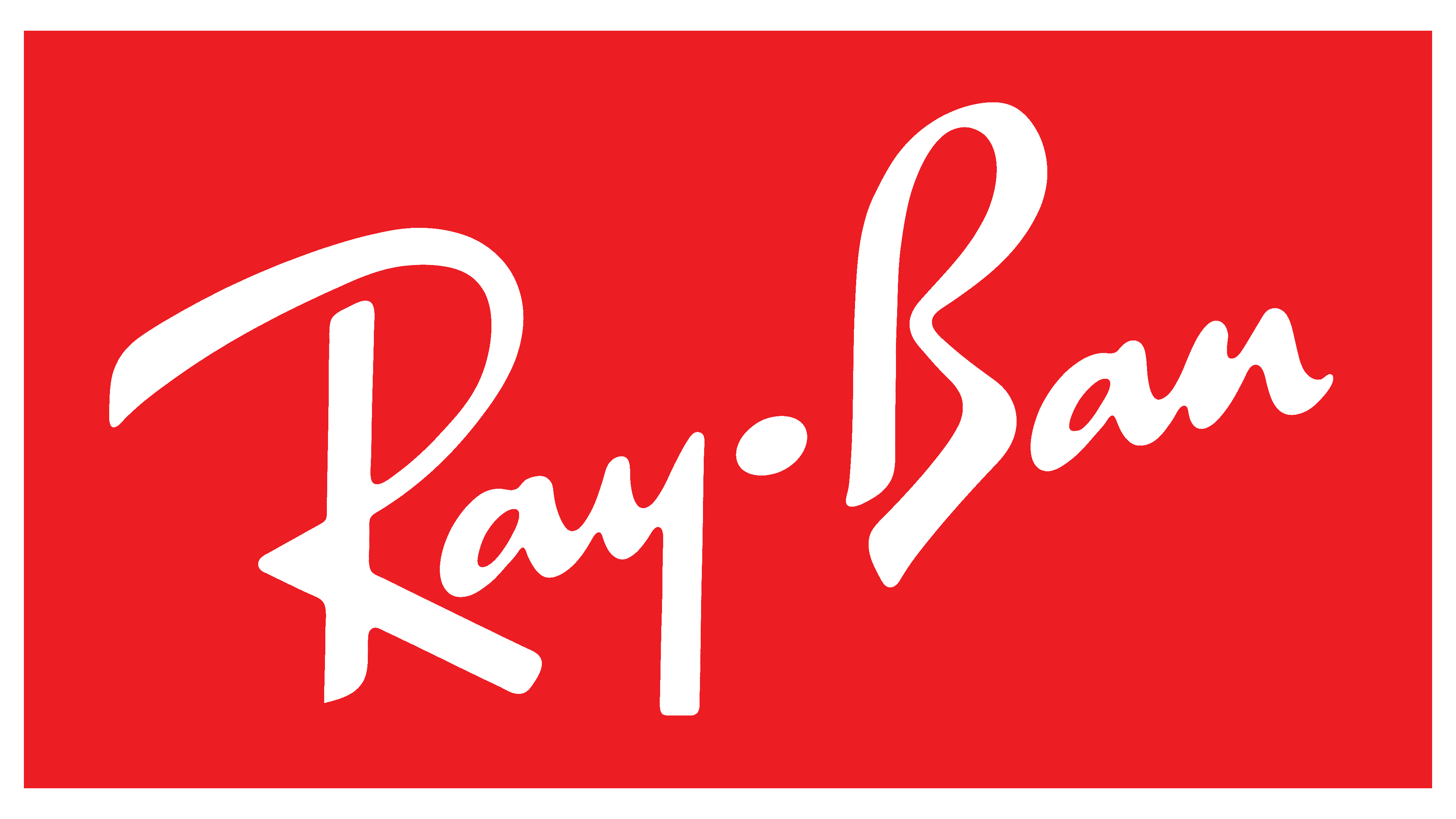Ray Ban Logo
Ray-Ban is a renowned global brand specializing in the production and sale of premium eyewear, notably sunglasses. Established in the 1930s, it’s now synonymous with timeless design and impeccable craftsmanship. Their iconic Aviator and Wayfarer models have garnered worldwide acclaim, cementing their place in pop culture. Currently, Ray-Ban targets the global eyewear market, with significant presence in North America, Europe, and Asia. The brand, once part of Bausch & Lomb, was acquired by Luxottica Group in 1999. Under Luxottica’s stewardship, Ray-Ban continues to innovate, fusing tradition with contemporary style, solidifying its status as a leading eyewear powerhouse.
Meaning and history
Ray-Ban’s journey began in the 1930s when the U.S. Army Air Corps expressed the need for sunglasses to shield pilots from the sun’s glaring rays. In response, Bausch & Lomb, a renowned optics company, introduced the first Aviator sunglasses in 1936. The brand name “Ray-Ban” was coined from the notion of “banning” sun rays.
The 1950s saw the birth of the Wayfarer design, which quickly became an emblem of Hollywood glamour. Icons like Audrey Hepburn and James Dean were often seen donning these shades, boosting their popularity manifold. Over the next few decades, Ray-Ban consolidated its image as the go-to brand for stylish eyewear with innovative lenses.
Ownership transitioned in 1999, when Bausch & Lomb sold Ray-Ban to Luxottica Group, an Italian eyewear conglomerate. Under Luxottica’s guidance, Ray-Ban expanded its range, reintroduced classic designs, and ventured into optical frames. The brand successfully merged its rich heritage with modern trends, collaborating with celebrities and designers.
Today, after nearly a century, Ray-Ban stands as a testament to timeless design and unparalleled craftsmanship. Its evolution from military eyewear to a global fashion staple showcases the brand’s ability to adapt and thrive through changing times.
1937 – Today
Introduced in 1937 alongside the brand’s inception, Ray-Ban’s signature emblem emerged as an iconic representation of the American eyewear powerhouse. Crafted in a vibrant juxtaposition of red and white, this emblem embraces a font that resonates with hand-drawn calligraphy. Its understated and sleek design has bolstered the brand’s recognition on a global scale.
Distinct markers of authenticity are subtly integrated into Ray-Ban’s products. A discreet “RB” engraving graces the corner of the left lens, while the right lens proudly displays “Ray-Ban” in crisp white. A deviation or absence of these markings often hints at counterfeits. Models with polarizing technology bear the “Ray-Ban P” insignia. Moreover, eyewear with metal frames exhibits the brand’s stamp prominently on the nose pads, often embossed. This dedication to branding extends to cases, cleaning materials, and other associated paraphernalia.
Embodying the elegance and minimalism of its eyewear range, the Ray-Ban emblem is positioned on an upward slant, illustrating the brand’s evolution, soaring reputation, technological advancements, and forward-thinking ethos. A pronounced dot seamlessly separates the two words, adding a design flair.
Though devoid of ostentatious graphics, this emblem has etched itself as a classic in the fashion world. Cementing its place since its 1937 registration with the U.S. Patent and Trademark Office, the Ray-Ban name often comes paired with the tagline “Genuine since 1937”, reinforcing the brand’s rich legacy and authenticity.











